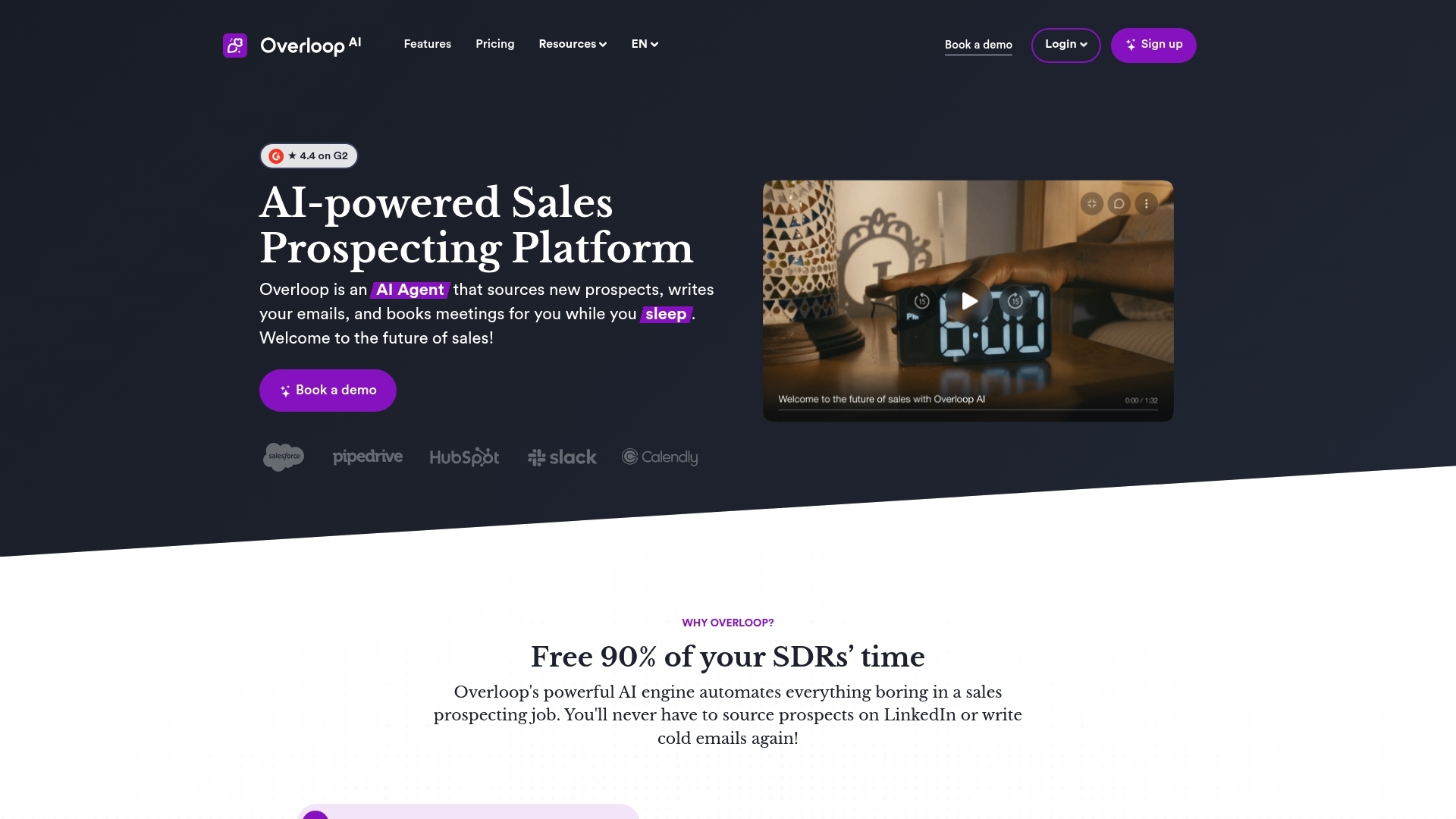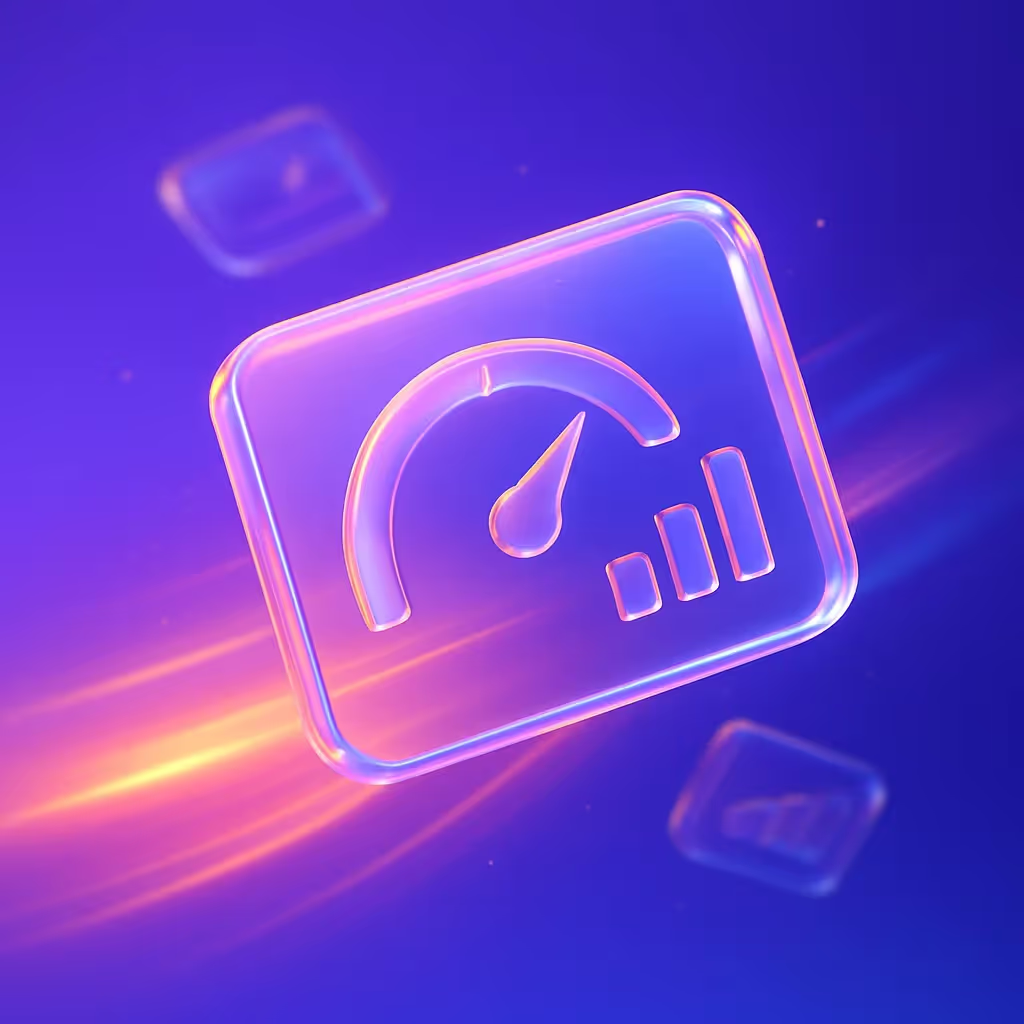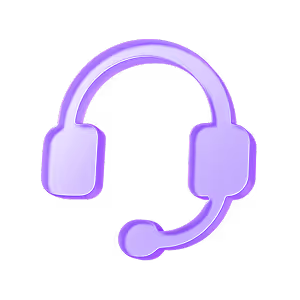Outbound sales serve as a direct approach for B2B companies to win new customers by reaching out proactively to potential clients, rather than waiting for leads to come inbound. In this model, sales teams identify target businesses, research key decision-makers, and initiate contact through channels like email, phone, or social media. The goal is to spark interest, build relationships, and convert prospects into clients through a deliberate, structured process.
The Foundation of Outbound Sales in B2B
Unlike inbound sales, where leads express interest first, outbound sales put your team in control of lead generation. This method lets companies expand beyond their inbound funnel and access markets or accounts that may not otherwise know about their solutions. Outbound strategies matter because they give B2B teams a predictable way to reach decision-makers, control pipeline growth, and create new business opportunities—even in highly competitive industries.
Today’s outbound sales rely on data, technology, and AI tools like Overloop to automate prospecting and outreach, making targeted campaigns far more efficient and personalized. Mastering outbound sales has become essential for sales teams that want to consistently drive growth and stay ahead in a rapidly changing market.
Outbound vs. Inbound Sales: Key Differences and Advantages
Understanding the distinction between outbound and inbound sales helps B2B teams make more informed decisions on their go-to-market strategy. Both approaches have unique strengths and specific use cases in business development.
How Outbound and Inbound Sales Differ
Outbound sales involve reaching out directly to potential customers who may not know about your company. Typical outbound activities include cold emailing, cold calling, and LinkedIn outreach. The goal is to create new opportunities proactively, often targeting ideal customer profiles with tailored messaging.
In comparison, inbound sales work by attracting leads who initiate contact with your company. This usually happens through content marketing, SEO, or events that draw interested prospects to request further information or a demo.
AspectOutbound SalesInbound SalesInitiativeCompany targets prospects directlyProspect initiates contactSpeedFaster potential pipeline generationLonger time to build tractionControlHigh; direct targetingLower; depends on inbound interestScalabilityEnabled by advanced automation and AI tools like OverloopRelies on content and marketing investment
Choosing the Right Approach for Your Goals
B2B companies with specific target accounts or urgent revenue goals often benefit from outbound sales. Outbound allows for immediate engagement with high-value prospects, bypassing lengthy nurture cycles. On the other hand, inbound sales suit organizations looking for long-term brand awareness and organic pipeline growth.
Combining both strategies and using automation platforms to streamline outreach can maximize results. For small businesses especially, efficient outbound tools make proactive lead generation manageable, even with limited resources.
Core Outbound Sales Techniques for B2B Teams
B2B sales teams use a combination of proven outbound techniques to start conversations and generate pipeline. The most effective outbound sales strategies include cold emailing, cold calling, and LinkedIn outreach, each bringing unique advantages when connecting with decision-makers.
Cold Emailing
Cold emailing remains a reliable method for initiating contact with potential prospects. The key to success lies in personalization and relevance. Use brief subject lines that address a real need or opportunity. Keep your message direct, mentioning the prospect’s business context and a clear reason for reaching out. Automated platforms like Overloop help deliver ultra-personalized messages to large prospect lists without losing the human touch—significantly increasing open and response rates.
Cold Calling
Despite digital noise, phone outreach can penetrate barriers that emails cannot. Preparation is essential: research the company, know your value proposition, and have a concise opening statement. Focus on building rapport quickly and be ready to handle objections. Limit your call to core points and always confirm next steps, such as scheduling a meeting.
LinkedIn Outreach
LinkedIn is crucial for reaching B2B prospects who might ignore email or phone outreach. Start by connecting with a brief, non-salesy note. Follow up with meaningful engagement on their content and send tailored messages that link your offer to their current challenges. Consistency and context are vital for standing out in crowded inboxes.
When used together with technology, these core techniques help B2B teams open doors and drive new conversations efficiently.
The Power of Automation: Overloop’s Role in Outbound Sales

Manual prospecting and outreach slow down many sales teams, leading to missed opportunities and wasted time. Automation transforms this process by removing repetitive tasks, allowing teams to focus on closing deals and building genuine connections with prospects. Overloop uses AI to address key bottlenecks in outbound sales for B2B organizations.
How Overloop Streamlines Outbound Sales
Overloop offers automated lead sourcing powered by a database of over 450 million B2B contacts. Users can define ideal customer profiles, then let the platform identify and verify relevant prospects. This eliminates the need for manual research and frees up hours each week.
The platform generates personalized outreach messages at scale. Its AI adapts emails to each recipient, using company data or recent activities to customize the content. This level of personalization increases reply rates and helps users stand out in crowded inboxes without requiring manual editing.
Overloop also protects deliverability with built-in spam safeguards, reducing the risk of ending up in junk folders or damaging sender reputation. For small B2B teams, these features make it possible to run large-scale outreach efficiently, compete with bigger players, and react quickly to sales opportunities with minimal overhead.
Choosing the Best Outbound Sales Software for Small Businesses
Modern sales teams face a crowded market of outbound sales software, but choosing the right tool is especially important for small B2B companies with limited resources and big goals. Effective software cuts down manual effort, scales outreach, and keeps essential sales data connected without requiring a large tech stack or extra management.
Key Features to Evaluate in Outbound Sales Software
Small businesses benefit from solutions that offer all-in-one outbound functionality without requiring complex setups. Overloop stands out by combining AI-powered lead sourcing, real-time personalization, and automated multi-channel campaigns in a single platform. This helps teams run targeted sales efforts without switching tools or risking data errors.
A well-chosen software gives small B2B teams more focus for relationship building instead of repetitive admin work. Prioritizing automation, personalization, and integration supports both short-term wins and long-term sales growth.
Deliverability, Spam Protection, and Multi-Channel Campaigns
Email deliverability determines if your outreach lands in a prospect’s inbox or disappears into their spam folder. Strong deliverability means your messages have a chance to be read; poor deliverability wastes effort and damages sender reputation. Avoiding spam traps and keeping campaigns efficient helps outbound sales teams maintain high performance.
Protecting Your Sender Reputation
Start with verified, up-to-date contact lists. Sending emails to invalid or outdated addresses increases bounce rates and risks being flagged as spam. Use plain text or simple HTML—overly complex designs, excessive images, or attachments often trigger filters. Rotate sending schedules to mimic natural communication patterns rather than blasting large batches at one time. Always include an opt-out link and respect unsubscribe requests.
Running Multi-Channel Campaigns for Higher Response Rates
Multi-channel outreach combines email, phone, and LinkedIn to increase touchpoints with prospects. Prospects respond differently across channels; some may ignore email but answer LinkedIn or phone outreach. For best results:
Overloop streamlines this process with built-in deliverability monitoring and spam safeguards, while centralizing email, LinkedIn, and phone outreach in a single workflow. This reduces manual errors, helps scale campaigns safely, and supports higher engagement without risking sender reputation.
Integrating Outbound Sales With Your CRM and Workflow
Connecting outbound sales workflows directly with your CRM helps sales teams work faster and with fewer mistakes. CRM integration means that any lead engagement or communication updates automatically sync between your outreach platform and contact database. This reduces data entry, prevents missed follow-ups, and gives everyone on your team access to the latest prospect information—all in one system.
Streamlined Processes and Accurate Data
Manual updates often lead to errors and duplicate records. With integrated systems, sales reps spend less time on admin work and more time reaching new prospects. Accurate data also powers more effective reporting, letting managers see which outreach strategies work best. Automatic logging of calls, emails, and notes creates a full activity trail for every prospect, supporting more personalized and timely follow-ups.
Workflow Automation for Consistency
Built-in workflow automation triggers next steps without manual reminders. For example, when a lead replies or books a meeting, the CRM can automatically update lead status and assign tasks for follow-up. This consistency ensures nobody slips through the cracks. Tools like Overloop simplify this setup by integrating directly with CRM systems such as Salesforce, HubSpot, and Pipedrive, allowing sales teams to manage campaigns, track interactions, and keep records aligned in real time.
Integrating outbound sales with your CRM reduces busywork and helps teams act quickly on every sales opportunity, supporting more efficient and consistent growth.
Personalization at Scale: Using AI and Automation to Boost Results
Scaling outbound sales goes beyond sending large quantities of messages. Success depends on making each prospect feel like the outreach is crafted specifically for them. AI and automation now make it possible to combine reach with real personalization—no manual message editing required.
How AI Powers Personalization for B2B Sales
AI-driven sales tools analyze prospect data—from job titles to recent company news—and use it to create individualized content, even when working with extensive lists. Automated systems can adjust subject lines, opening lines, and value propositions for each recipient based on:
Personalized messages show prospects you understand their context and challenges, dramatically increasing engagement and reply rates. For B2B, this tailored approach leads to more meaningful conversations and better conversion results.
Automation Tools for Efficient Large-Scale Outreach
Platforms like Overloop integrate AI with automated campaign workflows, enabling users to set personalization rules once and apply them across thousands of contacts. This process allows small teams to:
Combining AI and automation ensures that even high-volume campaigns maintain a human touch. The result is a sustainable way to reach more prospects while retaining message quality and increasing conversion rates.
Overcoming Common Outbound Sales Challenges
Even well-structured outbound sales teams run into friction. The most common challenges include slow prospecting, low reply rates, manual inefficiencies, and wasted time chasing the wrong leads. Each roadblock can stall pipeline growth if left unaddressed.
Time-Consuming Prospect Sourcing
Sales reps often spend hours finding and validating contact data. Manual research not only drains productivity but also creates scope for error. Using software that automates lead sourcing based on detailed targeting criteria dramatically shortens the prospecting cycle and improves list quality. For example, Overloop combines a large B2B contact database with AI filters to surface verified prospects, so teams work from day one with reliable data.
Low Response Rates and Engagement
Generic messaging, lack of timing, or poor segmentation lead to low engagement. The solution is multi-layered:
Platforms with AI-driven personalization help craft unique, contextual emails for each recipient—reducing the chance of being ignored.
Targeting Quality and Workflow Inefficiencies
Poor targeting results in contacting unqualified leads. Use advanced filters and enrichment tools to build lists closely matched to your ideal customer profile. Integrating outbound workflows with CRM and automation tools reduces manual handoffs and keeps data consistent, boosting efficiency. Overloop’s direct CRM integrations make this workflow seamless for small teams.
The Future of Outbound Sales: Trends and Predictions
The outbound sales landscape is rapidly changing as new technologies and buyer expectations reshuffle how B2B companies reach, engage, and convert prospects. Trends in automation, artificial intelligence, and data-driven processes shape the strategies top-performing teams use today—and will rely on tomorrow.
AI as the New Standard for B2B Sales
AI is no longer a luxury or hype. Sales teams now consider AI-powered prospecting, message personalization, and campaign management foundational tools. AI’s ability to process large data sets ensures salespeople target the right leads, automate repetitive steps, and send messages that feel custom-made for each recipient. This results in higher response rates and lets teams focus their time where real relationships matter most.
Platforms like Overloop exemplify this shift by automating the identification, validation, and engagement of prospects—helping teams reach hundreds or thousands of leads with tailored outreach previously only possible through manual work. AI-driven insights also mean sales reps spend less time on research and more time on high-impact conversations.
Personalized, Multi-Channel Outbound Is the New Default
Single-channel efforts are fading. Today's successful outbound strategy spans multiple channels—email, phone, LinkedIn, and, in some cases, SMS or instant messaging. Buyers expect to be contacted in their preferred medium and are more likely to respond when outreach feels relevant and well-timed.
Automation tools allow seamless planning and execution across these channels. Campaigns now use engagement signals to decide when and where to interact with each prospect, using data to trigger follow-ups or switch channels without manual oversight. This ensures every touchpoint maximizes the chance of a reply while reducing the risk of outreach fatigue.
Data and Analytics Drive Continuous Improvement
Measuring campaign performance at a granular level enables teams to optimize outreach over time. Advanced analytics track open, click, and reply rates, as well as deeper signals like message timing or subject line impact. Sales teams now use data-driven testing and refinement as an ongoing practice, not a one-off exercise.
Integrated analytics from platforms such as Overloop give managers visibility into which strategies work best. Faster iteration leads to higher productivity, shorter sales cycles, and smarter use of resources.
Compliance, Deliverability, and Trust Will Remain Critical
Stricter data privacy laws (such as GDPR or CCPA) force companies to refine how they source, store, and use prospect information. Email deliverability will depend even more on sender reputation, clear consent, and relevant, personalized outreach. B2B teams must continue to invest in practices and technologies that safeguard both compliance and trust.
What B2B Sales Teams Should Prioritize Now
Outbound sales will continue to reward teams that use technology to blend scale and genuine connection. AI-powered platforms like Overloop make it possible for businesses of any size to manage complex campaigns and adapt as new trends emerge. As buyer expectations and technologies advance, staying agile and data-driven sets the foundation for ongoing sales success.



